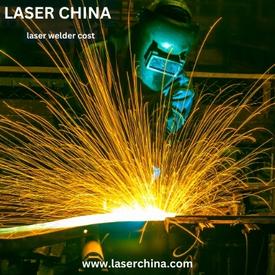Laser welding technology has revolutionized various industries, offering precise and efficient solutions for joining materials. However, investing in a laser welder requires careful consideration of costs. In this guide, we delve into the factors influencing laser welder cost and provide insights to help you make informed decisions.
Factors Affecting Laser Welder Cost:
-
Machine Type: Laser welders come in various types, including fiber, CO2, and Nd:YAG. Fiber laser welders are commonly preferred for their high efficiency and versatility. CO2 lasers are suitable for certain materials, while Nd:YAG lasers are ideal for specific applications like welding jewelry. Each type varies in cost, with fiber lasers generally being more expensive due to their advanced technology.
-
Power and Performance: The power output of a laser welder significantly influences its cost. Higher power lasers can handle thicker materials and achieve faster welding speeds but come at a premium price. Assess your welding requirements carefully to determine the appropriate power level needed for your applications.
-
Automation and Features: Laser welders may offer additional features such as CNC capabilities, automatic loading and unloading systems, and advanced control interfaces. These features enhance productivity but also contribute to the overall cost of the machine. Evaluate whether the added automation justifies the investment based on your production volume and workflow.
-
Brand and Reputation: Established brands with a reputation for quality and reliability typically command higher prices for their laser welders. While opting for a well-known brand may offer peace of mind regarding performance and support, it's essential to balance brand reputation with your budgetary constraints.
-
Maintenance and Support: Consider the long-term costs associated with maintenance and technical support when evaluating laser welder expenses. Some manufacturers offer comprehensive service packages, including regular maintenance visits and prompt technical assistance, which may incur additional costs but can minimize downtime and prolong the lifespan of your equipment.
-
Training and Integration: Training your staff to operate the laser welder safely and efficiently is crucial for maximizing its potential. Factor in the costs of training programs provided by the manufacturer or third-party trainers. Additionally, consider any expenses associated with integrating the laser welder into your existing production processes, such as modifications to workspace layout or workflow adjustments.
Conclusion: Investing in a laser welder involves considering various factors beyond the initial purchase price. By understanding the key determinants of laser welder cost, including machine type, power, features, brand reputation, maintenance, training, and integration, you can make informed decisions aligned with your budget and production requirements. Prioritize finding a balance between upfront investment and long-term value to ensure optimal performance and return on investment from your laser welding equipment.


